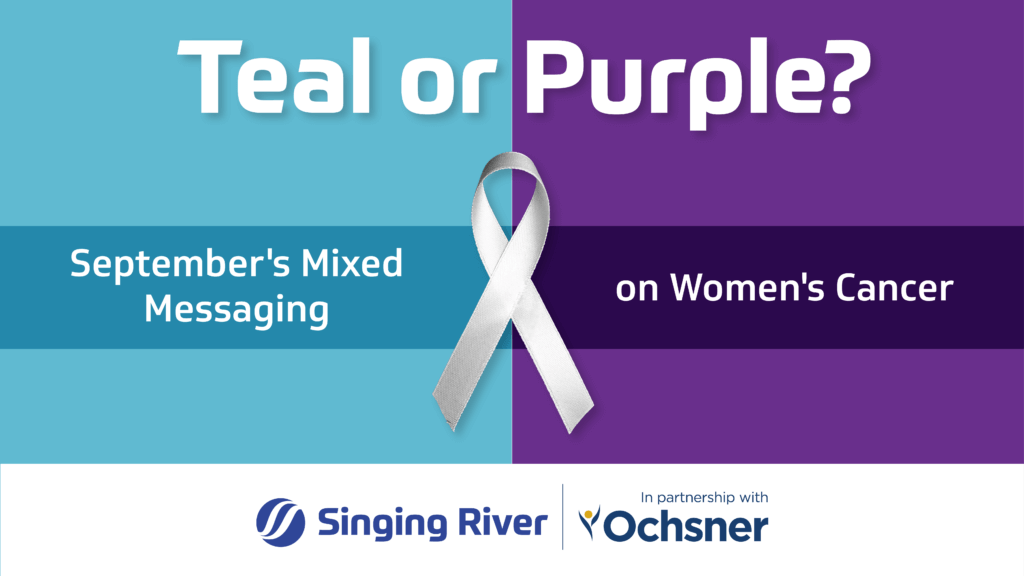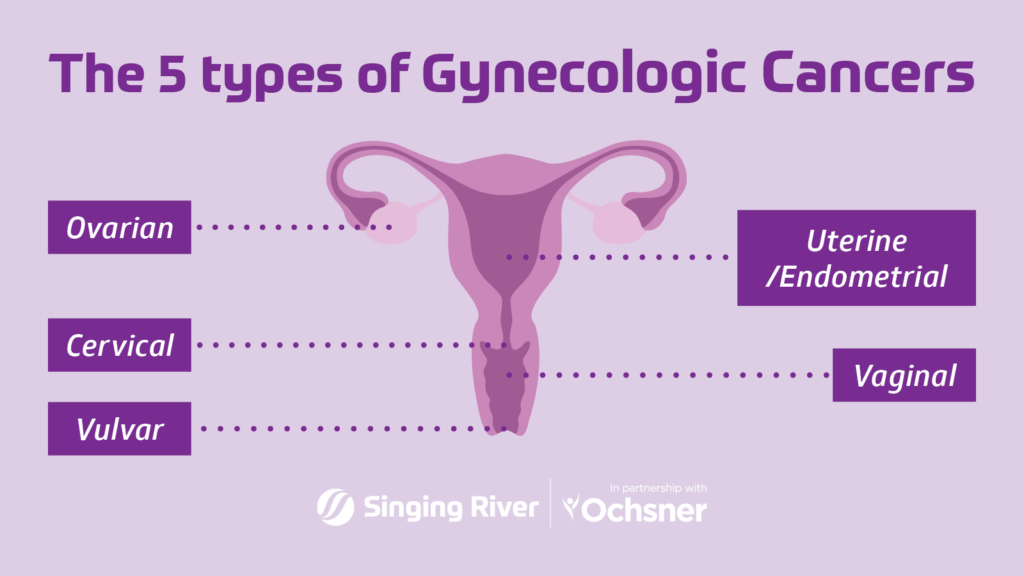Teal or Purple? September’s Mixed Messaging on Women’s Cancers

You’ve probably noticed that a visit to Newk’s usually comes with a teal cup during the month of September. But then you see pretty purple everything for events like Move4Her, a fundraising event supporting the Foundation for Women’s Cancer.
While you may feel the two colors are competing for their fair share of attention during September, do you know what they represent? We all know Pink + October = Breast Cancer Awareness. So let’s take a look at September’s colors: teal and purple, and their respective causes.
Teal = Ovarian Cancer
When you see teal ribbons out and about in the month of September, it’s a safe bet that these are aimed at raising awareness, funds for research, and support for those affected by ovarian cancer during Ovarian Cancer Awareness Month.
Although Ovarian Cancer is relatively rare in comparison with others, it generally has no symptoms or warning signs until it is in advanced stages, meaning that those who are diagnosed face steep odds.

There are currently no screening tests for ovarian cancer in asymptomatic patients, though a visit to a Primary Care Provider or OB/GYN that includes a routine pap smear also includes a manual palpation (or feeling) of the ovaries, which could detect some presence of more significant masses.
Ovarian Cancer is a type of Gynecologic Cancer.
Purple = Gynecologic Cancer
OK, so this is where it gets a little confusing. September is also Gynecologic Cancer Awareness Month. The purple you see while out and about, thought admittedly less-commonly than teal, is in support of patients, research, treatment, and awareness for Gynecologic Cancer.
Gynecologic Cancer is an umbrella term for cancers of the female reproductive system. The Foundation for Women’s Cancers groups these cancers into five sub-sets: Ovarian, Endometrial/Uterine, Cervical, Vulvar, and Vaginal Cancer.

Each year, more than 110,000 women are diagnosed with Gynecologic Cancer. Some types can be screened for with things like routine pap smears or even prevented in large part by HPV vaccines, such as cervical cancer. Others are sneakier, harder to detect, and more difficult to treat.
How it all fits
In the same way that all squares are rectangles, but not all rectangles are squares–all Ovarian Cancer is Gynecologic Cancer, but not all Gynecologic Cancer is Ovarian. While Ovarian Cancer is less common, it is highly deadly. And while Gynecologic Cancers are considered common, some types are more easily detected, diagnosed, and treated than others.
Our take? Celebrate both.
Whether you choose to wear teal or purple, you’re showing support, love, and growing awareness for cancers that effect the lives of thousands of women each year…or, just wear a little bit of both. And take some time this month to acknowledge with knowledge by learning more about Gynecologic Cancers, Ovarian and beyond, as well as Singing River’s very own Dr. Mike Finan, the Mississippi Coast’s only Gynecologic Oncologist.
Content inspired by Healthcare is Selfcare: The Podcast.

Gynecologic Oncology…Oh My! While medical terms and titles are a mouthful, they are vital in providing life saving care. In this episode we deep dive into the world of women’s cancer and defining what Gynecologic Oncology really means.